
The University of Virginia (UVA) is a public research university in Charlottesville, Virginia, United States. It was founded in 1819 by Thomas Jefferson. The university is set within the Academical Village, a UNESCO World Heritage Site.
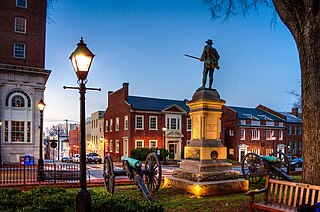
Charlottesville, colloquially known as C'ville, is an independent city in Virginia, United States. It is the seat of government of Albemarle County, which surrounds the city, though the two are separate legal entities. It is named after Queen Charlotte. At the 2020 census, the population of the city was 46,553. The Bureau of Economic Analysis combines the City of Charlottesville with Albemarle County for statistical purposes, bringing its population to approximately 160,000. Charlottesville is the heart of the Charlottesville metropolitan area, which includes Albemarle, Buckingham, Fluvanna, Greene, and Nelson counties.

William Holmes McGuffey was an American college professor and president who is best known for writing the McGuffey Readers, the first widely used series of elementary school-level textbooks. More than 120 million copies of McGuffey Readers were sold between 1836 and 1960, placing its sales in a category with the Bible and Webster's Dictionary.

The Rotunda is a building located on The Lawn on the original grounds of the University of Virginia. Thomas Jefferson designed it to represent the "authority of nature and power of reason" and modeled it after the Pantheon in Rome. Construction began in 1822 and was completed shortly after Jefferson's death in 1826. The campus of the new university was unique in that its buildings surrounded a library rather than a church, as was common at other universities in the English-speaking world. To many, the Rotunda symbolizes Jefferson's belief in the separation of church and education, and represents his lifelong dedication to education and architecture. The Rotunda was designated a National Historic Landmark in 1966, and is part of the University of Virginia Historic District, designated in 1971.
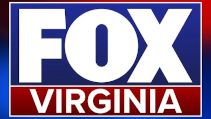
WCAV is a television station in Charlottesville, Virginia, United States, affiliated with CBS and Fox. It is owned by Lockwood Broadcast Group alongside low-power ABC affiliate WVAW-LD. Both stations share studios on Rio East Court in Charlottesville, while WCAV's transmitter is located on Carters Mountain south of the city.

WVAW-LD is a low-power television station in Charlottesville, Virginia, United States, affiliated with ABC. It is owned by Lockwood Broadcast Group alongside dual CBS/Fox affiliate WCAV. Both stations share studios on Rio East Court in Charlottesville, while WVAW-LD's transmitter is located on Carters Mountain south of the city.

WVIR-TV is a television station in Charlottesville, Virginia, United States, affiliated with NBC and The CW Plus. Owned by Gray Television, the station has studios on East Market Street in downtown Charlottesville, and its primary transmitter is located on Carters Mountain south of the city.

WVIR-CD is a low-power, Class A television station in Charlottesville, Virginia, United States. It is a translator of dual NBC/CW+ affiliate WVIR-TV which is owned by Gray Television. WVIR-CD's transmitter is located on Carters Mountain south of Charlottesville; its parent station maintains studios on East Market Street in downtown.
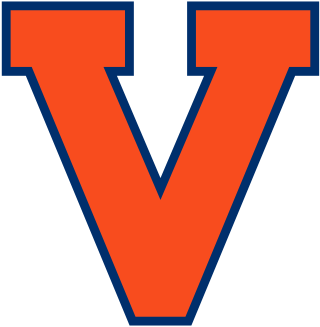
The 2008 Virginia Cavaliers football team represented the University of Virginia during the 2008 NCAA Division I FBS football season. It was Virginia's 55th season as a member of the Atlantic Coast Conference (ACC). The Cavaliers were led by head coach Al Groh. They played their home games at Scott Stadium in Charlottesville, Virginia.

Michael Signer is an American attorney, author, and politician who served as mayor of Charlottesville, Virginia.

The treatment of slaves in the United States often included sexual abuse and rape, the denial of education, and punishments like whippings. Families were often split up by the sale of one or more members, usually never to see or hear of each other again.

The history of the University of Virginia opens with its conception by Thomas Jefferson at the beginning of the early 19th century. The university was chartered in 1819, and classes commenced in 1825.
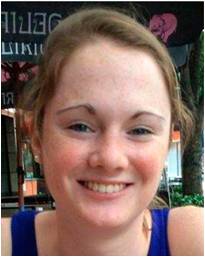
Hannah Elizabeth Graham was an 18-year-old second-year British-born American student at the University of Virginia who went missing on September 13, 2014. She was last seen early in the morning that day, at the Downtown Mall in Charlottesville, Virginia. Five weeks later, her remains were discovered on an abandoned property in nearby Albemarle County. Jesse Matthew pleaded guilty to murdering Graham and was sentenced to life imprisonment. He was also found guilty and given three additional life sentences for other, previous crimes.
Höweler+Yoon (HYA) is a design-driven architecture practice and creative studio based in Boston, Massachusetts. It was founded in 2004 by Eric Höweler and Meejin Yoon.
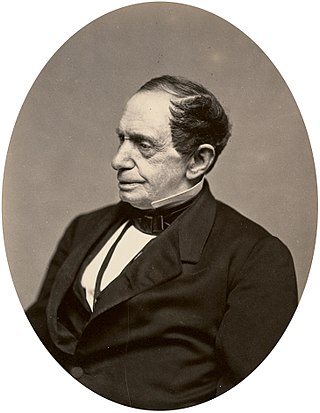
The role of slavery at American colleges and universities has been a focus of historical investigation and controversy. Enslaved Africans labored to build institutions of higher learning in the United States, and the slave economy was involved in funding many universities. People, forced to labor and seen as less than human, were used to build academic buildings and residential halls. Though slavery has long been presented as a uniquely Southern institution, colleges and universities in Northern states benefited from the labor of slaves. The economics of slavery brought some slave owners great wealth, enabling them to become major donors to fledgling colleges. Many colleges founded in states with legalized slavery utilized enslaved people and benefited from the slavocracy. Slaves were also sold by university administrators to generate capital. In some parts of the nation it was also not uncommon for wealthy students to bring an enslaved person with them to college. Ending almost 250 years of slavocracy did not end white supremacy, structural racism, or other forms of oppression at American colleges and the legacy of slavery still persists in many establishments.
John Henry James was an African-American man who was lynched near Charlottesville, Virginia on July 12, 1898, for having allegedly raped a white woman. James had no known family in the area, and had lived in Charlottesville for only five or six years. He was an ice cream seller; "nothing else is known of him."
In a unanimous vote, on July 1, 2019, the City Council of Charlottesville, Virginia, established a new city holiday, Liberation and Freedom Day, to be celebrated on March 3. Union Army troops, under the command of Major General Philip Sheridan, arrived in Charlottesville on March 3, 1865, liberating over 14,000 enslaved workers. "Blacks were the majority race in the Charlottesville-Albemarle area." In the 1870 Census, the first one in which Charlottesville appears, its population was 2,838.

Isabella Gibbons was an enslaved woman serving as a cook at the University of Virginia, in Charlottesville, Virginia. After liberation in 1865 she became a teacher.

William Gibbons, was a formerly enslaved servant, who became a highly successful Baptist minister in Charlottesville and Washington, D.C. He was married to Isabella Gibbons.

Sally Cottrell Cole was an enslaved maid and seamstress who worked at Monticello and the University of Virginia.






















